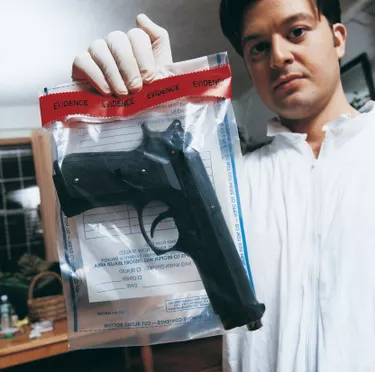
Almost all crimes scenes contain evidence that must be collected for analysis and use in a future prosecution. Using the proper techniques to collect the evidence left at a crime scene is critically important. Without use of proper techniques, evidence can be lost, overlooked or contaminated. In addition, improper collection can lead to the evidence being ruled inadmissible at trial.
Step 1
Secure and preserve the crime scene. Before any evidence can be collected, the scene must be secured from further contamination. Establish a crime scene perimeter and allow only necessary personnel to enter. Photograph the scene before evidence is collected.
Video of the Day
Step 2
Put on gloves and other protective clothing, if needed, to make sure you don't contaminate the scene, then conduct a systematic search of the area. Collect evidence that is susceptible to the elements first. Hair, for example, can be blown away by the wind. Blood, seminal fluid or other liquid evidence also can be lost if not collected quickly.
Step 3
Use cotton swabs or gauze to gather blood evidence that has not dried. Blood and seminal fluid should be allowed to dry completely once collected, then quickly refrigerated. Items containing blood and seminal fluids should be transported in paper bags not plastic to keep moisture and bacteria from forming. Blood that has dried can be collected as is by taking the entire surface on which it dried or cutting out a portion of the surface.
Step 4
Collect hair, fibers and thread using tweezers. Each piece of evidence should then be placed individually in a sealed collection bag or container .
Step 5
Dust for fingerprints. Special powder is used that adheres to the oil found on human fingers. Once a print is detected it can be "lifted" using a special tape. The tape is then placed on a glass slide, marked and transported in a sealed plastic evidence bag.
Step 6
Pick up larger pieces of evidence, such as a firearm or clothing, while wearing plastic gloves so as not to contaminate the evidence. Place each piece in a separate marked bag or box.
Things You'll Need
Gloves
Tweezers
Dusting powder
Tape
Evidence bags
Paper bags
Boxes
Glass slides
Warning
Each piece of evidence must be carefully marked and handled. Each step of the collection process must be chronicled so as to preserve the chain of evidence.
Video of the Day